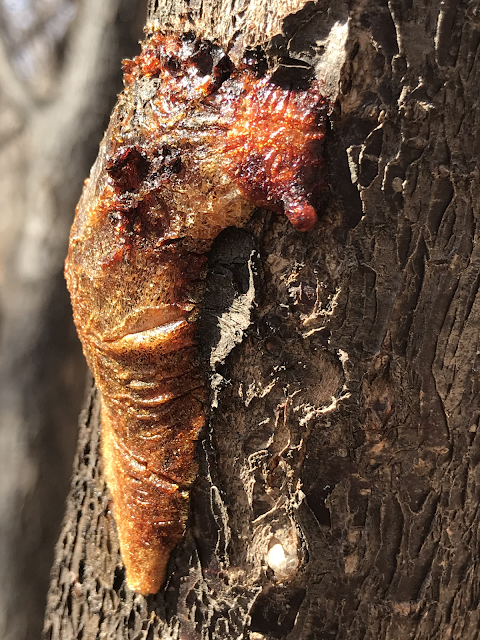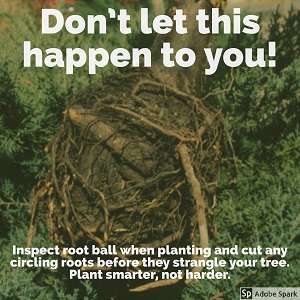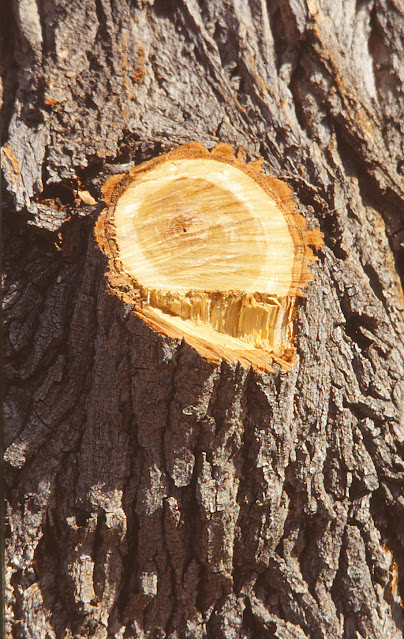Diagnosing Trees with Oozing Sap… Again

Southwest Yard & Garden by Dr. Marisa Thompson, with diagnoses by Phillip Lujan of the NMSU Plant Diagnostic Clinic Diagnosing Trees with Oozing Sap… Again (but this time, the sap is reddish-orange and doesn’t stink!) Reddish sap oozing from a plum tree at Bachechi Open Space in Albuquerque, March 2021. Photo credit M. Rehn. Question : Any idea what may be causing the sap to run out of some of these plum trees in the arboretum at Bachechi Open Space? - Dustin C., Albuquerque Answer : This is turning out to be another one of those common questions that come in from all parts of the state. In the past two weeks, I’ve gotten photos of orange or red sap oozing from plum trees and a redbud in the Albuquerque area, an ash in Las Cruces, and I’ve taken a ton of pictures of plum, cherry, and peach trees with similar globs that have hardened after a few years in the sun. Are these weird amber blobs caused by borers or a plant pathogen? Or both? How do you tell? And what can

